|
OCEAN
CLEANUP PROJECT - MEDIA REVIEW
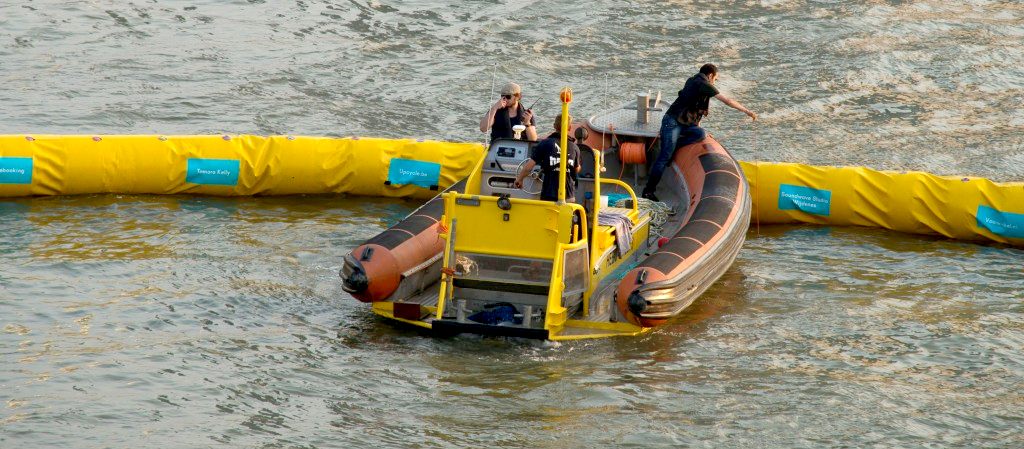
ROTTERDAM -
Setting up a test boom for the ocean cleanup project. Imagine
the logistical problem of setting up a boom several hundred
metres long.
GRIND
TV - FEBRUARY 1 2016 - Giant Ocean Cleanup project readies for launch
The founder of the Ocean Cleanup project, Boyan Slat, has a very ambitious goal … to clean the ocean of plastic.
He has been working on a prototype for a low-cost solution to the pollution problem plaguing the seas.
Instead of sending out boats to collect plastic — which doesn’t break down — Slat hopes to use the ocean’s currents to his advantage.
“The oceanic currents moving around is not an obstacle,” Slat told The Washington Post. “It’s a solution. Why move through the oceans if the oceans can move through you? … Let the rotating currents do their work.”
Currently, the 21-year-old is working to build a giant angled barrier in which the currents flow through, depositing plastic trash into a collection zone.
The scientific community and conservationists’ eyes are all on Slat’s project which will launch in June.
Slat has been working feverishly on the project for years, building a company and funding it through crowdsourcing. He and his team raised $2 million to fund the prototype from thousands of people across the globe last September.
However, he has some critics, some claiming that he is naive.
Yet Slat said the way innovation works is through trial and error, using the Wright brothers as examples.
“The reason why the Wright brothers were successful wasn’t because they had the most resources, but because they understood how invention works. You have to iterate quickly, and you should be prepared to fail. Because things often don’t go as planned,” Slat said.
The prototype will launch off the coast of the Netherlands in June and will focus on the effects of ocean conditions.
by Ellen Wright
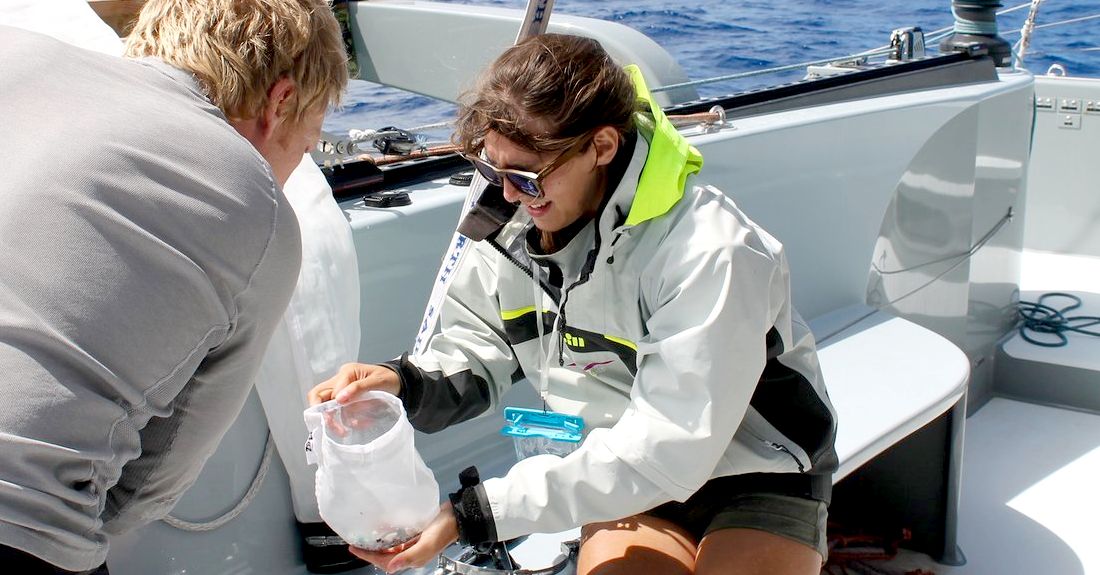
COLLECTING
SAMPLES
- The only way to get a handle on the problem is to get
out in the ocean and take a look at the composition of the
seawater.
NEWS DISCOVERY JUNE 2 2015
- 20 Year Old to Launch First Ocean Cleaning System
There are an estimated 5 trillion pieces of plastic floating through the world’s oceans, enough to fill almost 600 jumbo jets. Cleaning up so much pollution might seem like a monumental task, but one 20-year-old is setting out to make a difference — in a big way.
Boyan Slat, the founder and CEO of The Ocean Cleanup, announced earlier this week that his organization will deploy the world’s first system to passively remove plastic waste from oceans around the world.
Ocean Array Could Clean Up 7,250,000 Tons Of Plastic
The system is comprised of a series of floating barriers that spans over a mile long, making it the longest floating structure in the ocean. The barriers trap floating plastic debris, which is then picked up a via conveyer belt 7,900 times faster and 33 times cheaper than other methods:
“Taking care of the world’s ocean garbage problem is one of the largest environmental challenges mankind faces today. Not only will this first cleanup array contribute to cleaner waters and coasts but it simultaneously is an essential step towards our goal of cleaning up the Great Pacific Garbage Patch. This deployment will enable us to study the system’s efficiency and durability over time,” said Slat.
The Ocean Cleanup plans to deploy the structure off of the coast of Japan during the second quarter of 2016.
by Danny Clemens, DSCOVRD

THE
GUARDIAN, 13 NOVEMBER 2015 - World’s largest ocean cleanup operation one step closer to launch
A crowdfunded 100km-long boom to clean up a vast expanse of plastic rubbish in the Pacific is one step closer to reality after successful tests of a scaled-down prototype in the Netherlands last week.
Further trials off the Dutch and Japanese coasts are now slated to begin in the new year. If they are successful, the world’s largest ever ocean cleanup operation will go live in 2020, using a gigantic V-shaped array, the like of which has never been seen before.
The so-called ‘Great Pacific garbage patch’, made up largely of tiny bits of plastic trapped by ocean currents, is estimated to be bigger than Texas and reaching anything up to 5.8m sq miles. It is growing so fast that, like the Great Wall of China, it is beginning to be seen from outer space, according to Jacqueline McGlade, the chief scientist of the UN environmental programme (Unep).
“We have to admit that there has been a market failure,” she told
the
Guardian. “Nevertheless, we have to create a market success that brings in new forms of chemistry and technology.”
The Ocean Cleanup project aims to do the technology part with a floating barrier as long as the Karman line that reaches from the sea to outer space.
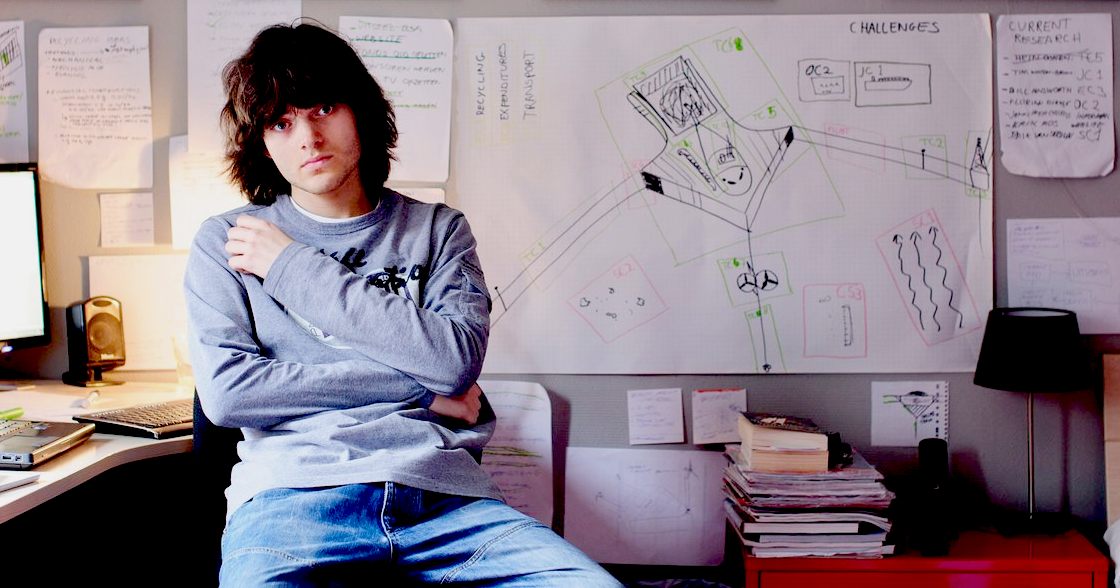
Sea currents and winds will be used to passively funnel plastic debris into an elbow made of vulcanised rubber where it can be concentrated for periodic collection by vessels.
Sub-sea buoys at depths of up to 30 metres would anchor the contraption in depths of up to 4.5km. Sea currents flowing beneath its booms would allow fish to escape, while hoovering up 42% of the Pacific’s plastic soup. At least, that is the plan.
“Everything is unknown so everything is a potential problem,” said Lourens Boot, the programme’s chief engineer, who has previously worked on offshore oil and gas rigs. “The risk matrix is big, but one by one we are tackling those risks.” One of the biggest has been finance.
Charles Moore, the racing boat captain who discovered the floating vortex in 1997, once said that the cost of a cleaning operation would
“bankrupt any
country”.
But around half the scheme’s initial €30m (£20m) budget has now been raised through online donations and wealthy sponsors. In the long term, the project plans to finance itself with a major retail line of ocean plastic fashion wear.
“We’ve analysed the quality of the plastic which was surprisingly good,” said Boyan Slat, the 21-year-old founder of the project. “We did some tests and the material is very recyclable. Tens of companies – large corporations – have shown an interest in buying up the plastic and that is our holy grail; funding the clean-up using revenues created by the plastic we extract.”
Boyan wears jeans made from ocean plastic but he is an unlikely green hero. A college drop-out and self-described “super geek,” he won a Guinness Book of World Records entry when he was 13 for simultaneously launching 213 highly-pressurised rockets. Last year he received the UN’s highest environmental award from Ban Ki-moon and was voted one of the most promising entrepreneurs worldwide.
“It is a classic David and Goliath project that couldn’t have happened 20 years ago,” he says. “Without social media it wouldn’t have gone viral. Without crowdfunding, it wouldn’t have had any money and without Skype, hundreds of volunteers spread out across the globe wouldn’t have come together.”
The US National Oceanic and Atmospheric Administration (NOAA) says it is encouraged by the attention being given to the Pacific’s pollution problem but cautions the technology is at an early stage. “There are a lot of feasibility issues with new technology and with open ocean cleanups,” Asma Mahdi, a Noaa spokeswoman told the Guardian.
Mahdi singled out the distribution of ocean debris way below the visible garbage patch, and the potential for harming sealife caught in the project’s cleanup barrier.
“By skimming floating debris off the surface, we may be doing more harm than good for marine surface-dwellers,” she said. “This includes the microscopic plankton that are the base of the marine food web and responsible for nearly half of the
oxygen production that occurs on our planet.”
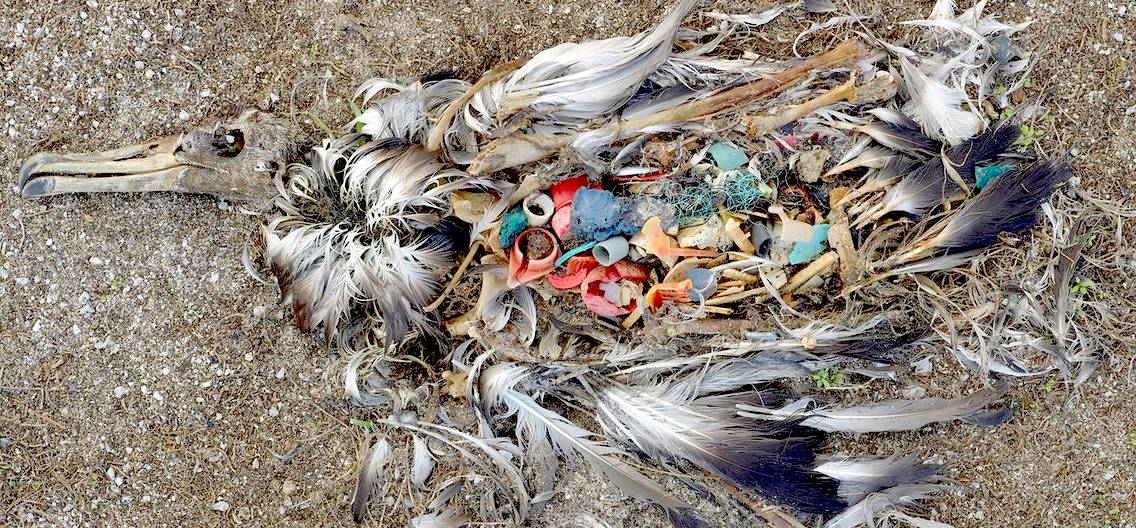
The project says that by focussing on the ocean’s crest they can remove a layer of trash that would otherwise sink, without disturbing sea life.
“The current flows underneath the barriers, taking away everything with neutral buoyancy - like plankton and other fish - while the positively buoyant plastic, up to a certain threshold, remains in front of it,” Slat said.
Its transboundary coalition of online ocean activists has already notched some impressive research achievements.
Early results from a research expedition to the Pacific earlier this year show plastic concentrations in the Pacific at least 10 times greater than expected, according to Slat.
“The previous studies estimated 10 kilos of plastic per square kilometer but we found it was in the hundreds of kilos per square kilometer,” he said.
The full study results will be released next year, but the scale of the threat posed to wildlife – and humans – is already known.
At least 100,000 sea mammals and millions of seabirds and fish and are thought to die each year from entanglement in the plastic muck or ingestion of its microplastics.
One recent study estimated that around 90% of the world’s sea birds had eaten colourful plastic items that they mistook for food.
In this way, decades of discarded plastic bottles, bags and stryrofoam cups are disintegrating at sea under the sun’s UV rays, releasing toxic chemicals such as PCBs and DDT into the food chain.
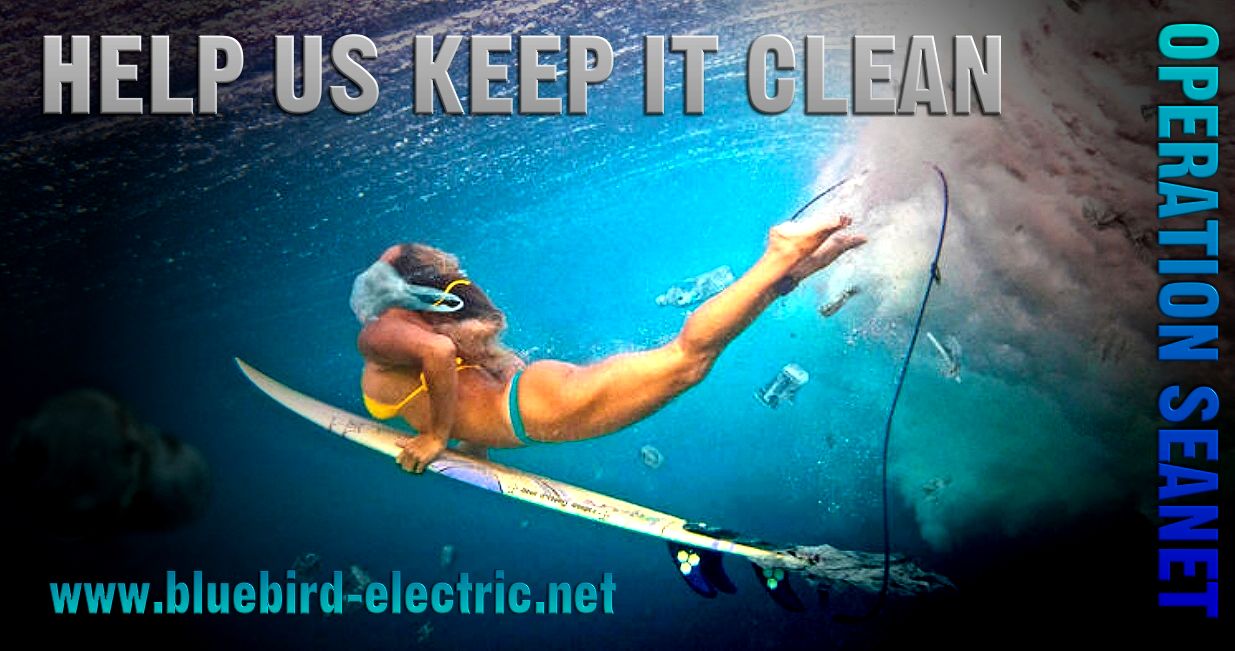
IT'S
NOT SPORTING
- Just like the situation at Guanabara
Bay, it could soon be dangerous to swim in a sea filled
with toxic plastic waste. Ocean ally, Bluebird
Marine Systems is pioneering eco robots
that can vacuum up plastic waste and offload while at sea, by
coupling with a converted bulk carrier called a PlastiMax.
A Unep report to be published next year estimates plastic debris volumes at around 10-100 items per square km in the English channel, compared to four per square metre in Indonesia and nearly a million per square km in the north Pacific subtropical gyre.
“The concentrations are getting a bit scary,” McGlade said. “From the surface to the sea floor there is a hundred-fold increase [in plastics] accumulating and it has a smothering effect. It is hidden and has a tremendous impact on oxygenation and a huge number of marine ecosystems.”
This hidden cache of seafloor trash will not be touched by the ocean clean-up project – and neither will microplastics smaller than 5mm in diameter. McGlade calls it “the biggest issue” with the project.
Slat counters that, by mass, these microplastics represent less than 1% of the Pacific’s plastic pollution. Without rapid action at the sea’s surface, it will grow exponentially.
The floating garbage dump in the north pacific subtropical gyre circulates between eastern Japan and the seas north of
Hawaii and west of
California. There, debris congregates in the space where warmer waters from the south Pacific meet cooler waters from the Arctic, creating a spinning vortex of plastic.
It is a surreal and lonely place, says Boyan, who travelled there on the research expedition, a world away from the Marin maritime research institute in Wageningen, in the Netherlands, where waves ripple, swirl and crash into one another around a mocked-up boom.
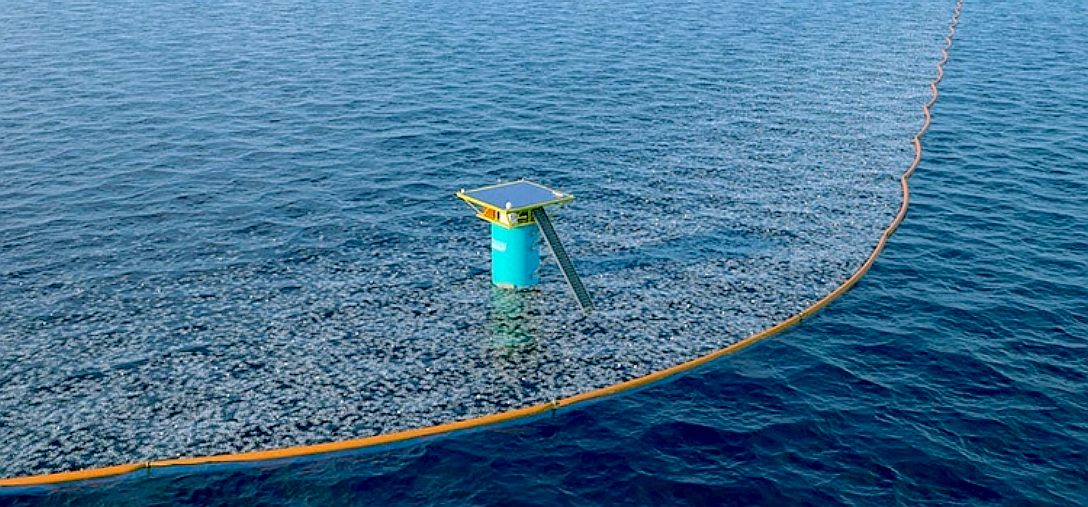
Every time a foghorn sounds, wave formations roll out of a mechanical line under floodlights, in a test designed to mimic natural conditions.
“For sure, the tests have been successful,” Slat said. “The goal was to simulate what would happen if we had a very long barrier and we didn’t see any weird behaviour.”
“The real trick will happen once we go deeper,” Boot added.
According to McGlade: “The problem is that it is still a relatively small-scale test but it did withstand wind and wave conditions such that we would be confident – maybe not out in the widest open ocean – but certainly in conditions around Europe that it would be effective.”
Slat argues that wave conditions in the mid-Pacific ocean are actually less challenging than in shallower coastal waters such as the
English
Channel, where a lower wave steepness may, counter-intuitively, be more likely to spill water over the barrier.
But he also backs proposals to prevent plastic pollution at source. Floating barriers at the mouth of river outlets to the world’s oceans have been mooted, particularly in the developing world where the problem is growing fastest.
Unep wants to see a market mechanism that can set industrial standards for use of biodegradable plastics, because of the way that polyethylene, a thermoplastic polymer found in plastic bags, rapidly disintegrates in sea
water.
While the UN group is an enthusiastic supporter of Slat’s Pacific cleanup plans, McGlade stressed that it should be seen as a beginning and not an end for ocean remediation projects.
“This example is one we want to encourage, but I’m hoping that across the world more and more innovative ideas will come about,” she said.
By Arthur Neslen (Wageningen, the Netherlands)
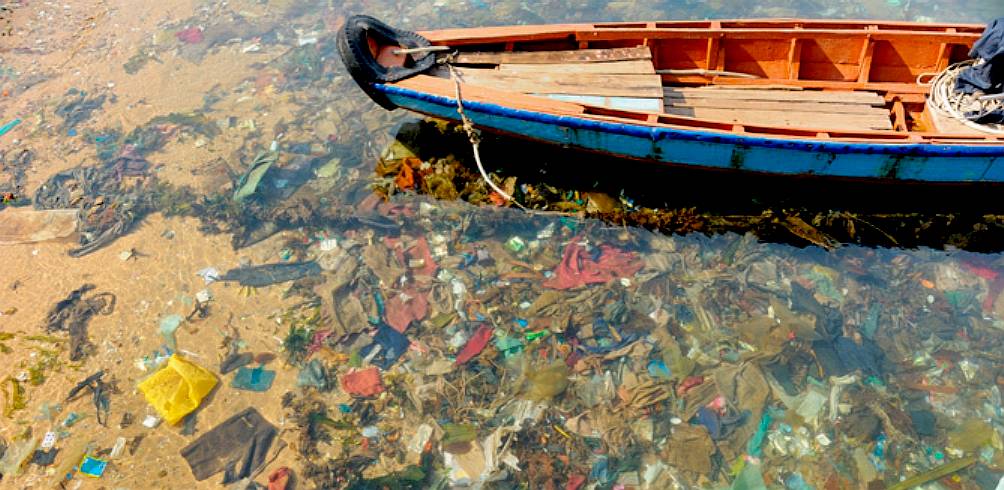
ROW,
ROW, ROW YOUR BOAT - Away from all this pollution, as
quickly as you can. How did it get there and how can we stop a
build up?
PROJECT
HISTORY 2012 - 2020
2012
- TED Talk
2013
- Company Formation
2014
- Concept Revisions
2015
- Scale Model Tests
2016
- North Sea Trial
2017
- Pipe Size Reduction
2018
- Wilson & Scale Test
2019
- Sea Trials Pacific
2020
- The Future
OCEAN
CLEANUP PROJECTS
*
Aliance
to end Plastic Waste
*
Boyan
Slat's ocean booms
*
4Ocean
recycled plastic bracelets
*
Kulo
Luna graphic novel
*
Ocean
Voyages Institute
*
Ocean
Waste Plastic
*
Seabin
*
Sea
Litter Critters
*
SeaVax
autonomous drones
*
World
Oceans Day
LINKS
& REFERENCE
http://www.theguardian.com/profile/arthurneslen
http://www.theguardian.com/environment/2015/nov/13/worlds-largest-ocean-cleanup-operation-one-step-closer-to-launch
http://news.discovery.com/earth/oceans/20-year-old-to-launch-first-ocean-cleaning-system-150602.htm
http://www.grindtv.com/nature/giant-ocean-cleanup-project-readies-for-launch/
http://www.grindtv.com/author/ellen-wright/?rel=author
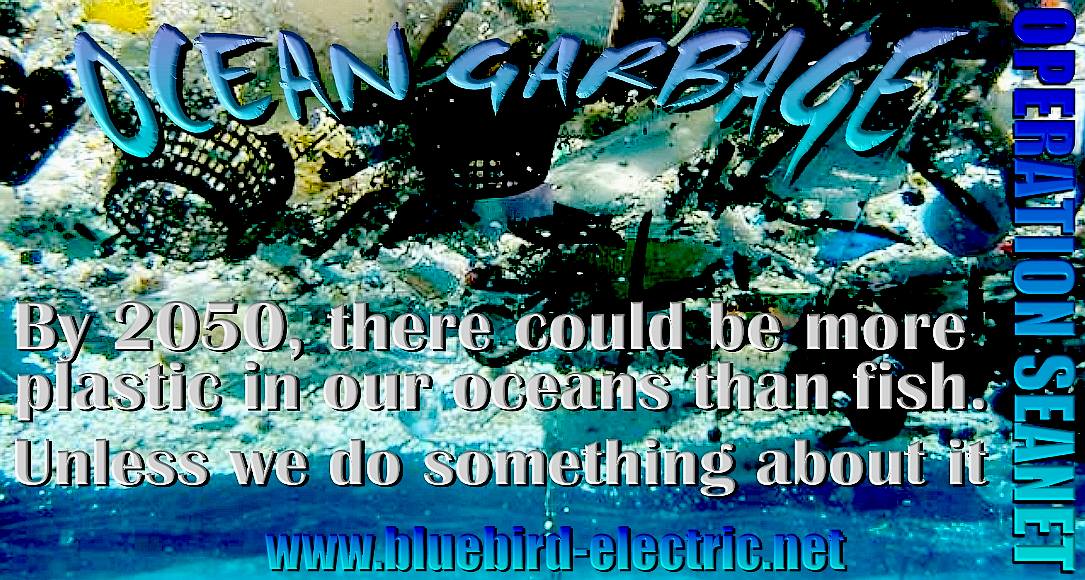
|






